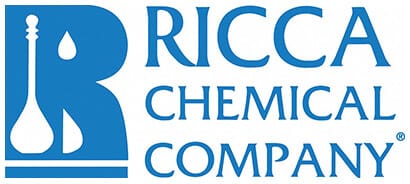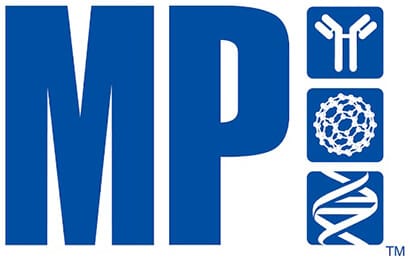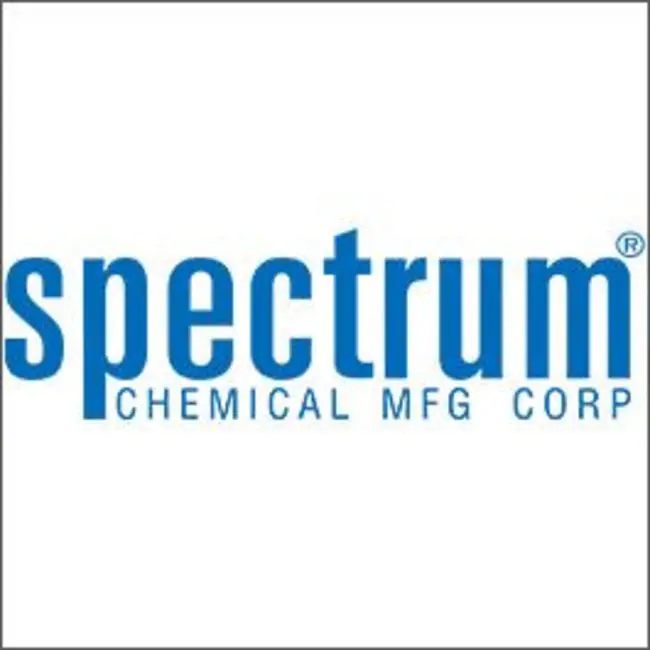1mg
Showing 7451–7500 of 7910 results
-
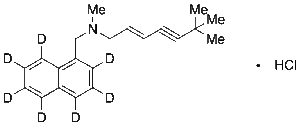
Terbinafine-d7 Hydrochloride
$185.44 Add to cart View Product DetailsMolecular Formula : C21 H18 D7 N . H Cl
-
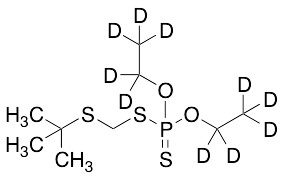
Terbufos-d10 (O,O-diethyl-d10)
$84.53 Add to cart View Product DetailsMolecular Formula : C9 D10 H11 O2 P S3
-

Terbufoxon Sulfone
$131.10 Add to cart View Product DetailsMolecular Formula : C9 H21 O5 P S2
-

Terbufoxon Sulfoxide
$235.46 Add to cart View Product DetailsMolecular Formula : C9 H21 O4 P S2
-

Terbutaline-D9
$221.66 Add to cart View Product DetailsMolecular Formula : C12H10D9NO3
-
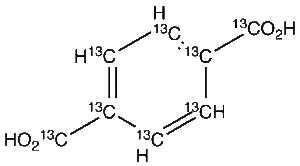
Terephthalic Acid-13C8
$317.40 Add to cart View Product DetailsMolecular Formula : 13C8 H6 O4
-

Teriflunomide-d4
$190.61 Add to cart View Product DetailsMolecular Formula : C12 2H4 H5 F3 N2 O2
-

Teriparatide-d10
$552.86 Add to cart View Product DetailsMolecular Formula : C181D10H281N55O51S2
-

Terlipressin-Phe(d5) Diacetate Salt
$154.39 Add to cart View Product DetailsMolecular Formula : C56H77D5N16O19S2
-
Ternidazole-d6 Hydrochloride (>90%)
$180.26 Add to cart View Product DetailsMolecular Formula : C7H6D6ClN3O3
-
![tert-Butyl 2-[4-(2-Fluorophenyl)-6-methylthieno[2,3-d]pyrimidin-2-ylamino]acetate](https://advatechgroup.com/wp-content/uploads/sys-masterimagesh20h7a10621020176414B691790-300x179.png)
tert-Butyl 2-[4-(2-Fluorophenyl)-6-methylthieno[2,3-d]pyrimidin-2-ylamino]acetate
$88.84 Add to cart View Product DetailsMolecular Formula : C19 H20 F N3 O2 S
-

tert-Butyl 3-((((R)-1-Amino-1-oxobutan-2-yl)amino)methyl)hexanoate-d7
$144.04 Add to cart View Product DetailsMolecular Formula : C15 D7 H23 N2 O3
-
![tert-Butyl-7-[4-(4-fluorophenyl)-6-isopropyl-2-mesylaminopyrimidin-5-yl]-(3R,5S)-dihydroxy-(E)-6-heptenoate](https://advatechgroup.com/wp-content/uploads/sys-masterimageshb8h1110621018538014B691758-300x152.png)
tert-Butyl-7-[4-(4-fluorophenyl)-6-isopropyl-2-mesylaminopyrimidin-5-yl]-(3R,5S)-dihydroxy-(E)-6-heptenoate
$154.39 Add to cart View Product DetailsMolecular Formula : C25H34FN3O6S
-

tert-Butyldimethylsilyloxy-5-aza-2′-deoxycytidine
$214.76 Add to cart View Product DetailsMolecular Formula : C25 H34 O4
-

Tesaglitazar
$56.06 Add to cart View Product DetailsMolecular Formula : C20 H24 O7 S
-
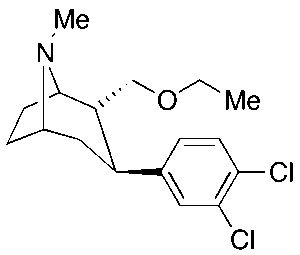
Tesofensine
$364.84 Add to cart View Product DetailsMolecular Formula : C17 H23 Cl2 N O
-
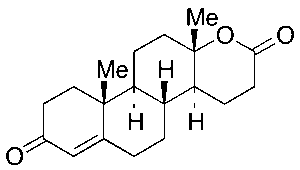
Testololactone
$236.33 Add to cart View Product DetailsMolecular Formula : C19 H26 O3
-
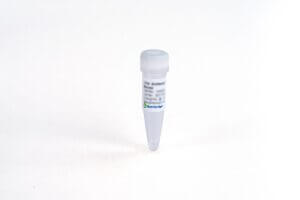
Testosterone Antibody (7B7HC)
$230.29 Add to cart View Product DetailsTestosterone
is an important sex hormone in males. It is synthesized in the body from
cholesterol. Testosterone is critical for the development of male
reproductive tissues. It also regulates sexual development and red blood cell
production. -

Testosterone Antibody (8A4HC)
$230.29 Add to cart View Product DetailsTestosterone
is an important sex hormone in males. It is synthesized in the body from
cholesterol. Testosterone is critical for the development of male
reproductive tissues. It also regulates sexual development and red blood cell
production. -
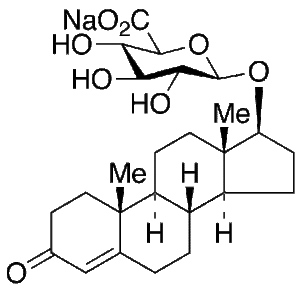
Testosterone Beta-D-Glucuronide Monosodium Salt
$220.80 Add to cart View Product DetailsMolecular Formula : C25 H35 O8 . Na
-

Testosterone Cypionate-d3
$236.33 Add to cart View Product DetailsMolecular Formula : C27 D3 H37 O3
-

Testosterone Enanthate-d3
$196.65 Add to cart View Product DetailsMolecular Formula : C26H37D3O3
-
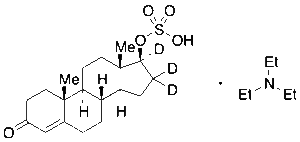
Testosterone Sulfate-d3 Triethylamine Salt
$176.81 Add to cart View Product DetailsMolecular Formula : C25H40D3NO5S
-

Testosterone Undecanoate-d3
$129.38 Add to cart View Product DetailsMolecular Formula : C30H45D3O3
-

Testosterone-2,2,4,6,6-d5
$257.03 Add to cart View Product DetailsMolecular Formula : C19 2H5 H23 O2
-

Testosterone-d3 (beta)-D-Glucuronide Monosodium Salt
$255.30 Add to cart View Product DetailsMolecular Formula : C25H32D3NaO8
-

Testosterone-d3 Propionate
$185.44 Add to cart View Product DetailsMolecular Formula : C22 2H3 H29 O3
-
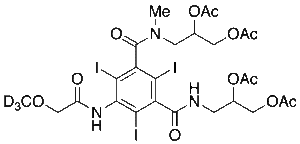
Tetra-O-acetyl Iopromide-d3
$188.03 Add to cart View Product DetailsMolecular Formula : C26H29D3I3N3O12
-

Tetrabenazine-d6
$128.51 Add to cart View Product DetailsMolecular Formula : C19H21D6NO3
-

Tetrabromobisphenol A-13C12
$364.84 Add to cart View Product DetailsMolecular Formula : 13C12 C3 H12 Br4 O2
-

Tetrabromophthalic Acid-13C6
$192.34 Add to cart View Product DetailsMolecular Formula : 13C6 C2 H2 Br4 O4
-
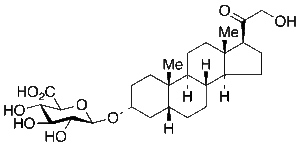
Tetrahydro 11-Deoxycorticosterone 3Alpha-Beta-D-Glucuronide
$176.81 Add to cart View Product DetailsMolecular Formula : C27H42O9
-
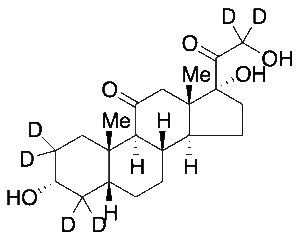
Tetrahydro Cortisone-d6
$414.86 Add to cart View Product DetailsMolecular Formula : C21H26D6O5
-

Tetrahydro Curcumin-d6
$264.79 Add to cart View Product DetailsMolecular Formula : C21H18D6O6
-
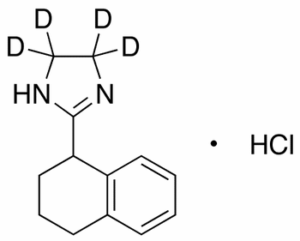
Tetrahydrozoline-d4 Hydrochloride
$185.44 Add to cart View Product DetailsMolecular Formula : C13H12D4N2 • HCl
-
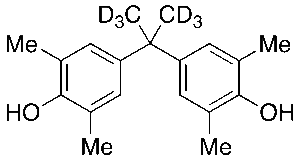
Tetramethyl Bisphenol A-d6
$77.63 Add to cart View Product DetailsMolecular Formula : C19 D6 H18 O2
-
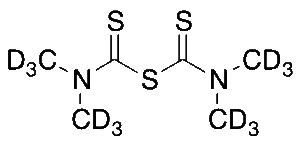
Tetramethylthiuram Monosulfide-d12
$214.76 Add to cart View Product DetailsMolecular Formula : C6D12N2S3
-

Tetrodotoxin
$580.46 Add to cart View Product DetailsMolecular Formula : C11 H17 N3 O8
-
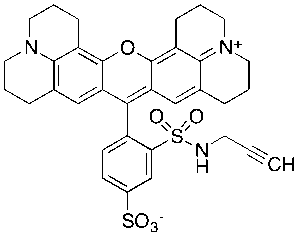
Texas Red 2’-Propargyl Sulfonamide 4’-Sulfate
$192.34 Add to cart View Product DetailsMolecular Formula : C34H33N3O6S2
-

Texas Red®-2-sulfonamidoethyl methanethiosulfonate
$144.04 Add to cart View Product DetailsMolecular Formula : C34 H37 N3 O8 S4
-

Tezacaftor
$71.59 Add to cart View Product DetailsMolecular Formula : C26 H27 F3 N2 O6
-
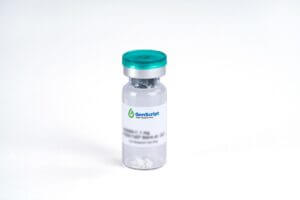
TFF3, Human
$2,018.25 Add to cart View Product DetailsThe Trefoil Factor peptides (TFF1, TFF2 and TFF3) are secreted in the gastrointestinal tract, and appear to play an important role in intestinal mucosal defense and repair. TFF-3 is expressed by goblet cells and in the uterus, and has also been shown to express in certain cancers, including colorectal, hepatocellular, and in biliary tumors. TFF3 may be useful as a molecular marker for certain types of cancer, but its role, if any, in tumorigenesis is unknown. TFF3 also promotes airway epithelial cell migration and differentiation.
-

TGF-α, Human
$836.63 Add to cart View Product DetailsTransforming Growth Factor-alpha (TGF-α) , also known as sarcoma growth factor, TGF-type I and ETGF, is a member of the EGF family of cytokines. It is expressed in monocytes, brain cells, keratinocytes and various tumor cells. TGF-α signals through EGFR and acts synergistically with TGF-beta to promote the proliferation of a wide range of epidermal and epithelial cells. TGF-α is a transforming growth factor that is a ligand for the epidermal growth factor receptor, which activates a signaling pathway for cell proliferation, differentiation and development. This protein may act as either a transmembrane-bound ligand or a soluble ligand. The biological actions of TGF-α and EGF are similar. For instance, TGF-α and EGF bind to the same receptor. When TGF-α binds to EGFR it can initiate multiple cell proliferation events.
-

TGF-β 1, Mouse
$2,876.44 Add to cart View Product DetailsTransforming growth factor beta 1 (TGFβ1) is the prototype of a growing superfamily of peptide growth factors and plays a prominent role in a variety of cellular processes, including cell-cycle progression, cell differentiation, reproductive function, development, motility, adhesion, neuronal growth, bone morphogenesis, wound healing, and immune surveillance. TGF-β1, TGF-β2 and TGF-β3 signal via the same heteromeric receptor complex, consisting of a ligand binding TGF-β receptor type II (TβR-II), and a TGF-β receptor type I (TβR-I). Signal transduction from the receptor to the nucleus is mediated via SMADs. TGF-β expression is found in cartilage, bone, teeth, muscle, heart, blood vessels, hematopoietic cells, lung, kidney, gut, liver, eye, ear, skin, and the nervous system.
-

TGF-β 2, Human
$2,876.44 Add to cart View Product DetailsTransforming growth factor beta-2 (TGF-β2) is a secreted protein which belongs to the TGF-beta family. It is known as a cytokine that performs many cellular functions and has a vital role during embryonic development. The precursor is cleaved into mature TGF-beta-2 and LAP, which remains non-covalently linked to mature TGF-beta-2 rendering it inactive. It is an extracellular glycosylated protein. It is known to suppress the effects of interleukin dependent T-cell tumors. Defects in TGFB2 may be a cause of non-syndromic aortic disease (NSAD).
-

TGF-β 2, Mouse
$2,876.44 Add to cart View Product DetailsTransforming growth factor beta 2 (TGF-β2) is a member of TGF-beta superfamily that shares a characteristic cysteine knot structure. Mice with TGF-β2 gene deletion show defects in development of cardiac, lung, craniofacial, limb, spinal column, eye, inner ear and urogenital systems. All TGF-β isoforms signal via the same heteromeric receptor complex, consisting of a ligand binding TGF-β receptor type II (TβR-II), and a TGF-β receptor type I (TβR-I). Signal transduction from the receptor to the nucleus is mediated via SMADs. TGF-β expression is found in cartilage, bone, teeth, muscle, heart, blood vessels, hematopoietic cells, lung, kidney, gut, liver, eye, ear, skin, and the nervous system.
-

TGF-β 3, Human
$2,876.44 Add to cart View Product DetailsTransforming growth factor beta 3(TGFB3) is a member of a TGF -β superfamily which is defined by their structural and functional similarities. TGFB3 is secreted as a complex with LAP. This latent form of TGFB3 becomes active upon cleavage by plasmin, matrix metalloproteases, thrombospondin -1, and a subset of integrins. It binds with high affinity to TGF- β RII, a type II serine/threonine kinase receptor. TGFB3 is involved in cell differentiation, embryogenesis and development. It is believed to regulate molecules involved in cellular adhesion and extracellular matrix (ECM) formation during the process of palate development. Without TGF-β3, mammals develop a deformity known as a cleft palate.
-
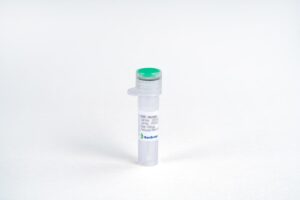
TGF-β1, Human
$2,876.44 Add to cart View Product DetailsTGF-β1 (transforming growth factor beta 1) is one of three closely related mammalian members of the large TGF-β1 superfamily that share a characteristic cystine knot structure. TGF-β1, -2 and -3 are highly pleiotropic cytokines that act as cellular switches to regulate processes such as immune function, proliferation and epithelial-mesenchymal transition. Each TGF-β isoform has some non-redundant function; for TGF-β1, mice with targeted deletion show defects in hematopoiesis and endothelial differentiation and died of overwhelming inflammation. TGF-β1 signaling begins with high-affinity binding to a type II ser/thr kinase receptor termed TGF-β RII. This receptor then phosphorylates and activates a second ser/thr kinase receptor, TGF-β RI (also called activin receptor‑like kinase (ALK)-5), or alternatively, ALK-1. This complex phosphorylates and activates Smad proteins that regulate transcription.
-

TGFβ1, Bovine
$2,742.75 Add to cart View Product DetailsTGF-β1 (transforming growth factor beta 1) is one of three closely related mammalian members of the large TGF-β1 superfamily that share a characteristic cystine knot structure. TGF-β1, -2 and -3 are highly pleiotropic cytokines that act as cellular switches to regulate processes such as immune function, proliferation and epithelial-mesenchymal transition. Each TGF-β isoform has some non-redundant function; for TGF-β1, mice with targeted deletion show defects in hematopoiesis and endothelial differentiation and died of overwhelming inflammation. TGF-β1 signaling begins with high-affinity binding to a type II ser/thr kinase receptor termed TGF-β RII. This receptor then phosphorylates and activates a second ser/thr kinase receptor, TGF-β RI (also called activin receptor‑like kinase (ALK)-5), or alternatively, ALK-1. This complex phosphorylates and activates Smad proteins that regulate transcription.
-

TGX-221
$72.45 Add to cart View Product DetailsMolecular Formula : C21H24N4O2


